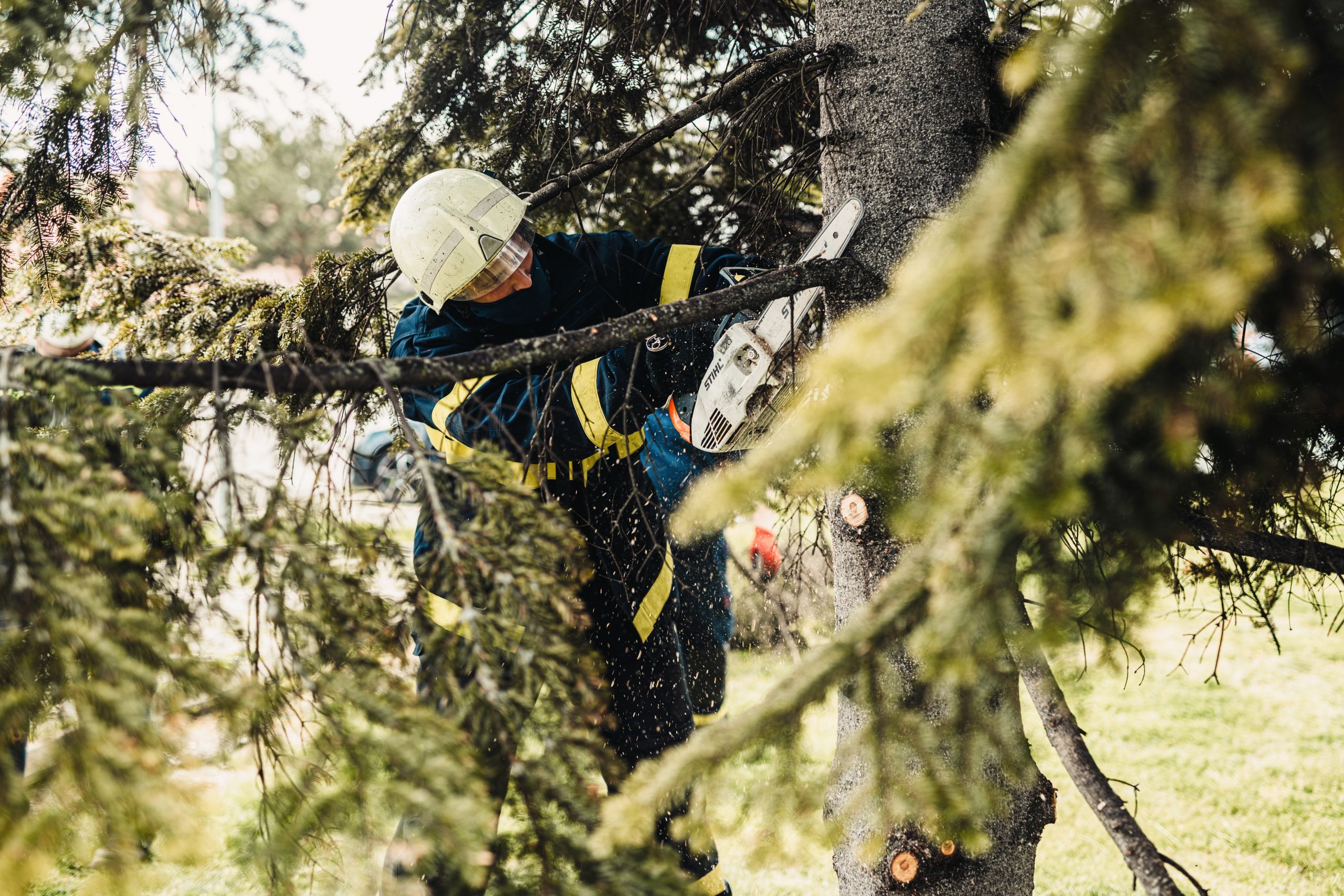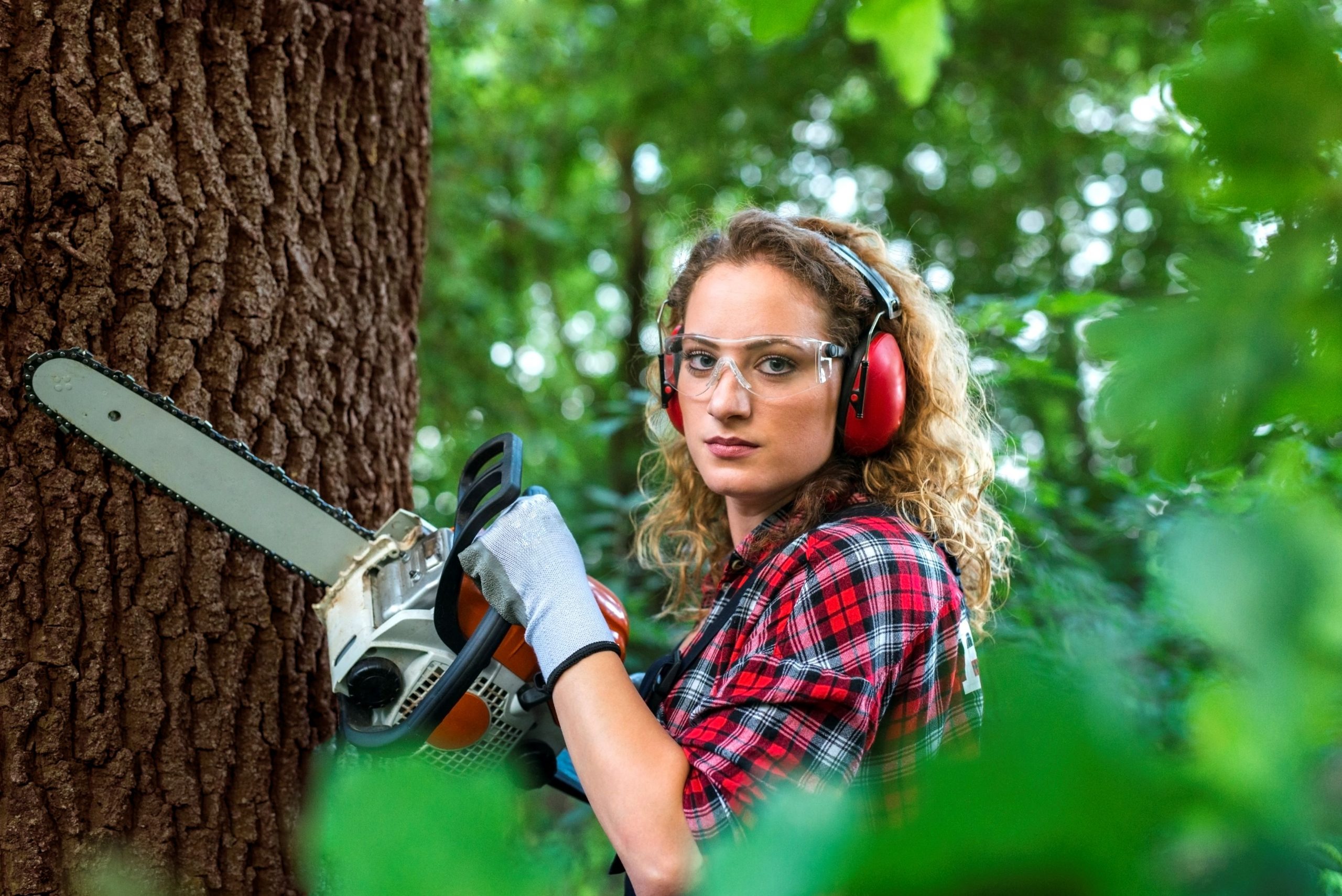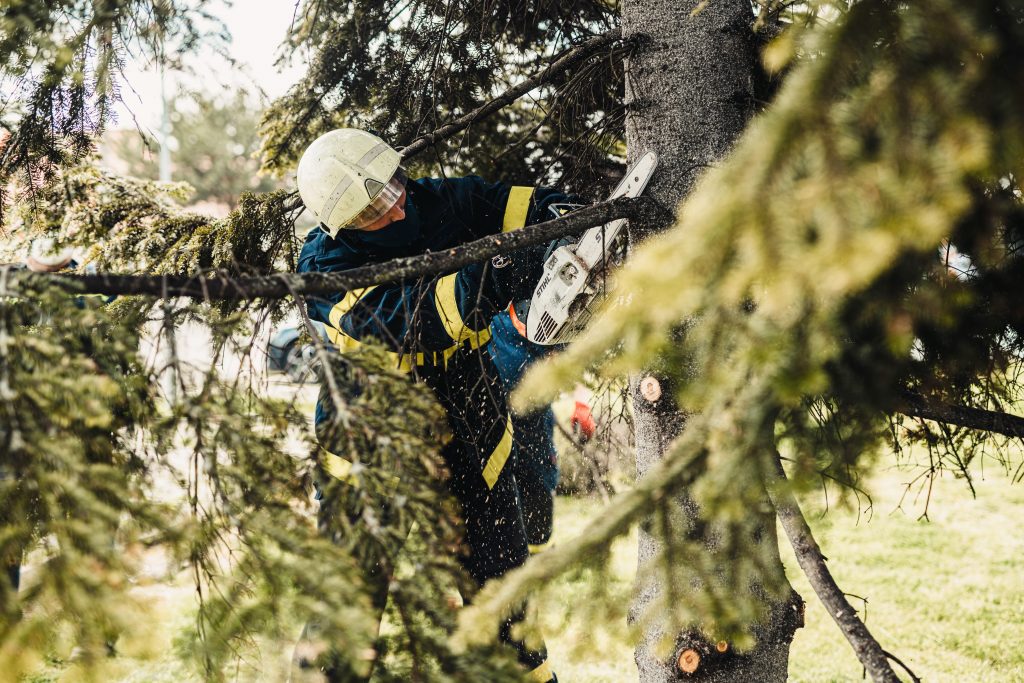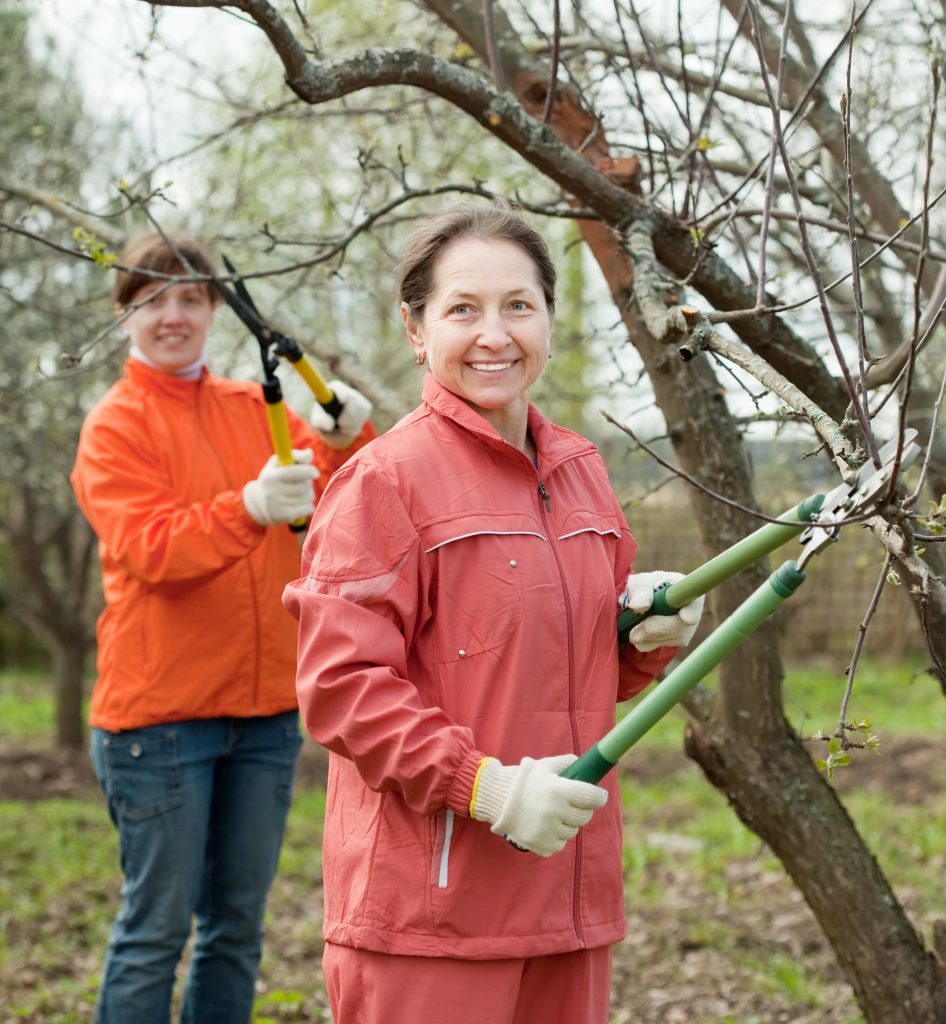UNDERSTANDING THE DIFFERENT TYPES OF TREE PRUNING TOOLS
UNDERSTANDING THE DIFFERENT TYPES OF TREE PRUNING TOOLS
Proper tree pruning is a fundamental arboricultural practice that significantly impacts both the health and aesthetics of trees. Pruning involves the selective removal of branches and foliage to enhance a tree’s structure, promote healthy growth, and improve its overall appearance. This practice goes beyond mere cosmetic trimming; it plays a crucial role in maintaining the vitality and longevity of trees. Here’s why proper tree pruning is essential for tree health and aesthetics:

Tree Health:
- Disease Prevention: Pruning removes dead, diseased, or decaying branches, preventing the spread of pathogens that could harm the entire tree.
- Increased Air Circulation: Thinning the canopy through pruning allows for better air circulation, reducing the risk of fungal infections and promoting overall tree vigor.
- Sunlight Penetration: Pruning opens up the canopy, allowing more sunlight to reach lower branches and the tree’s interior. This promotes photosynthesis and ensures that all parts of the tree receive adequate light.
- Reduced Risk of Breakage: Proper pruning removes weak or structurally compromised branches that could break during storms or heavy winds, reducing the risk of property damage and injury.
- Improved Wound Healing: Clean pruning cuts heal faster and more effectively, minimizing the entry points for pests and pathogens.
- Enhanced Nutrient Distribution: By removing competing branches, pruning redirects the tree’s energy towards healthy growth and the development of strong, productive branches.
Aesthetics:
- Enhanced Form and Structure: Pruning shapes trees to have better form and structure, giving them a balanced and visually pleasing appearance.
- Controlled Growth: Pruning controls the direction of growth, preventing branches from becoming overgrown or misshapen.
- Preservation of Views: Proper pruning can maintain or enhance scenic views by selectively removing obstructing branches.
- Consistency in Landscape Design: Pruning ensures that trees fit harmoniously within the landscape design, complementing other plantings and structures.
- Promotion of Flowering and Fruiting: Correct pruning techniques can encourage flowering and fruiting in ornamental and fruit-bearing trees.
- Safety and Aesthetics: Pruning removes dead, broken, or tangled branches that can be unsightly and pose safety hazards.
- Encouragement of Canopy Density: Pruning can selectively thin or shape a tree’s canopy to achieve the desired density and appearance.
In essence, proper tree pruning is a holistic practice that balances the tree’s health with its visual appeal. When performed by trained professionals with an understanding of tree biology, growth patterns, and species-specific needs, pruning can greatly contribute to the long-term well-being and aesthetics of trees. Homeowners, landscapers, and arborists who prioritize proper pruning ensure that trees continue to provide ecological, aesthetic, and functional benefits for years to come.
Tools used for Pruning
Tree pruning involves a variety of tools, each designed for specific tasks and tree sizes. The right tools ensure efficient and safe pruning while promoting tree health. Here’s an explanation of the various tools commonly used for tree pruning:

- Pruning Shears (Hand Pruners):
- These handheld tools are used for precise pruning of small branches and twigs.
- They come in bypass, anvil, and ratchet styles, with bypass shears being the most common.
- Ideal for branches up to ¾ inch in diameter.
- Loppers:
- Loppers have long handles and larger cutting heads for pruning thicker branches.
- They provide more leverage and are suitable for branches up to 2 inches in diameter.
- Pruning Saws:
- Pruning saws have specialized teeth and blades designed to cut through thicker branches.
- Types include hand saws, folding saws, and pole saw attachments.
- Useful for branches too large for shears or loppers.
- Hedge Shears:
- Hedge shears are used for shaping and trimming hedges and shrubs.
- They have long, straight blades that create a straight cut.
- Pole Pruners (Manual and Telescopic):
- Pole pruners extend reach for pruning high branches while standing on the ground.
- Manual pole pruners have a rope or cord mechanism, while telescopic models allow for adjustments in length.
- Pole Saws:
- These are similar to pole pruners but have a specialized saw blade at the end for cutting higher branches.
- Chainsaws:
- Chainsaws are power tools used for cutting larger branches or even entire trees.
- They come in various sizes, from small electric models to larger gas-powered ones.
- Chainsaws require proper training and safety precautions.
- Electric Pruning Saws:
- Electric pruning saws are lightweight and easy to maneuver, suitable for small to medium branches.
- Cordless Pruning Tools:
- Cordless tools offer portability and convenience without the need for power outlets.
- They include cordless electric chainsaws and pruning shears.
- Grafting and Budding Tools: – These specialized tools are used for grafting and budding techniques to propagate trees and plants.
- Bonsai Tools: – Precision tools used for shaping and maintaining bonsai trees, including pruning shears, concave cutters, and wire cutters.
- Precision Pruning Tools (Topiary Shears): – Used for detailed pruning, shaping, and topiary work on ornamental plants and trees.
- Safety Gear: – While not cutting tools, safety gear such as gloves, safety glasses, helmets, and hearing protection are essential for protecting the pruner during the process.
Selecting the right tool depends on factors such as the size of branches, the tree species, the height of branches, and the desired pruning outcome. For larger and more complex tasks, it’s often best to consult a professional arborist who has the experience and knowledge to choose the appropriate tools and techniques for safe and effective tree pruning.
Hand Pruning Tools
Hand pruning tools are essential instruments used by gardeners, landscapers, and arborists for precision pruning and trimming of plants, shrubs, and trees. These tools are designed to offer control, accuracy, and ease of use when performing various cutting and shaping tasks in the garden or landscape. Hand pruning tools come in different shapes and sizes, each serving a specific purpose. Here are some common types of hand pruning tools:

- Pruning Shears (Secateurs):
- Pruning shears, also known as secateurs, are handheld tools used for cutting branches and stems up to about 1 inch in diameter.
- They come in two types: bypass and anvil. Bypass shears have two curved blades that bypass each other, creating a clean cut. Anvil shears have one straight blade that cuts against a flat surface, which can crush delicate stems if not used carefully.
- Loppers:
- Loppers are larger pruning tools designed to cut thicker branches, usually up to 2 inches in diameter.
- They have longer handles than pruning shears, providing extra leverage for cutting through tougher wood.
- Hedge Shears:
- Hedge shears have long, straight blades designed for trimming hedges, shrubs, and bushes.
- They can create straight, uniform cuts along a surface and are not suitable for cutting woody branches.
- Pruning Saws:
- Pruning saws are used for cutting larger branches and limbs, typically ranging from 2 to 5 inches in diameter.
- They have specialized teeth and blade designs for efficient cutting through wood.
- Pole Pruners:
- Pole pruners are designed for reaching higher branches without the need for a ladder.
- They consist of a long handle with a cutting head at the end, operated by pulling a rope or squeezing a trigger.
- Hand Pruning Snips:
- Pruning snips are small, handheld tools used for delicate pruning tasks such as deadheading flowers or trimming small stems.
- They provide precision cutting for intricate work.
- Hand Pruning Saws:
- Hand pruning saws are compact saws designed for cutting larger branches and stems in tight spaces.
- They are ideal for pruning in confined areas where larger pruning saws may not fit.
- Bud Pruners:
- Bud pruners, also known as floral snips, are specialized tools for delicate pruning tasks such as removing flower buds or leaves.
- Grafting Tools:
- Grafting tools are used for joining plant parts to create new plants. They include tools for making precise cuts and securing grafts.
- Thinning Shears:
- Thinning shears are designed to selectively remove smaller branches to improve air circulation and light penetration within a plant.
When using hand pruning tools, it’s important to follow proper techniques to ensure clean and healthy cuts. This includes selecting the appropriate tool for the task, making cuts at the correct angle and location, and maintaining the tools by keeping them sharp and clean. Well-maintained hand pruning tools contribute to effective tree and plant care, promoting healthy growth and maintaining the desired shape and aesthetics of landscapes.
Proper Use and Safety Guidelines
Proper use and safety guidelines for hand pruning tools are essential to ensure effective and safe pruning practices. Adhering to these guidelines not only helps you achieve optimal results but also minimizes the risk of accidents, injuries, and damage to plants. Whether you’re using pruning shears, loppers, saws, or other hand tools, here are some important steps to follow:
- Select the Right Tool:
- Choose the appropriate hand pruning tool for the task at hand based on the size of the branch, stem, or plant you’re pruning.
- Inspect the Tool:
- Before use, inspect the tool for any damage, rust, or dull blades. Damaged tools can lead to unsafe or ineffective pruning.
- Wear Personal Protective Equipment (PPE):
- Always wear appropriate personal protective equipment, including gloves, safety goggles, and sturdy footwear, to protect against potential hazards.
- Maintain a Clean Workspace:
- Clear the area around the plant to prevent tripping hazards and create a safe working environment.
- Practice Good Posture:
- Stand with your feet shoulder-width apart for stability and maintain a balanced posture while using the tool.
- Hold the Tool Correctly:
- Grip the tool’s handles firmly, using both hands when necessary, to maintain control and precision during cuts.
- Use the Correct Cutting Technique:
- Use the appropriate cutting technique for the tool. For bypass pruners and loppers, make clean cuts close to the branch collar (the swollen area where the branch meets the trunk or larger branch).
- Cut at the Right Angle:
- Make cuts at a slight angle and just outside the branch collar to facilitate healing and prevent water accumulation on the cut surface.
- Avoid Overexertion:
- Use your body’s strength and the tool’s leverage to your advantage. Avoid forcing the tool or overexerting yourself, which can lead to fatigue and injuries.
- Step Back and Evaluate:
- Step back periodically to assess your progress and ensure you’re achieving the desired shape and result.
- Maintain Control:
- Be aware of the direction the cut branch or stem will fall and make sure it won’t hit you, bystanders, or structures.
- Use Caution with Overhead Work:
- When using pole pruners or working above your head, be mindful of the tool’s weight and potential falling debris.
- Keep Children and Pets Away:
- Ensure that children and pets are at a safe distance from your work area to prevent accidents.
- Properly Store Tools:
- Store hand pruning tools in a safe and dry place, away from children’s reach.
- Clean and Sharpen Tools:
- After use, clean your tools to prevent rust and disease transmission. Regularly sharpen blades for efficient and safe cutting.
- Seek Professional Help When Needed:
- If a task requires cutting near power lines, dealing with large branches, or poses potential hazards, consider hiring a certified arborist for assistance.
- Stay Informed:
- Keep learning about proper pruning techniques, safety practices, and new developments in tree care.
About Murray, Utah
Murray is a city situated on the Wasatch Front in the core of Salt Lake Valley in the U.S. state of Utah. Named for territorial governor Eli Murray, it is the state's fourteenth largest city. According to the 2020 census, Murray had a population of 50,637. Murray shares borders with Taylorsville, Holladay, South Salt Lake and West Jordan, Utah. Once teeming with heavy industry, Murray's industrial sector now has little trace and has been replaced by major mercantile sectors. Known for its central location in Salt Lake County, Murray has been called the Hub of Salt Lake County. Unlike most of its neighboring communities, Murray operates its own police, fire, power, water, library, and parks and recreation departments and has its own school district. While maintaining many of its own services, Murray has one of the lowest city tax rates in the state.
Neighborhoods in Murray, Utah
Murray Oakes, Grant Park, Southwood Park, Murray Park, Murray Park Restrooms, Willow Pond Park, Neighborhood Veterinary Care
Things To Do in Murray, Utah
Bus Stops in Murray, Utah to Truco Services, Inc.
Bus Stop in Murray Central Station (Bay C) Murray, Utah to Truco Services, Inc.
Bus Stop in State St @ 4801 S Murray, Utah to Truco Services, Inc.
Bus Stop in Murray North Station Murray, Utah to Truco Services, Inc.
Bus Stop in State St @ 4949 S Murray, Utah to Truco Services, Inc.
Bus Stop in Murray Central Frontrunner/Trax Station Murray, Utah to Truco Services, Inc.
Bus Stop in Murray Blvd / Vine St (SB) Murray, Utah to Truco Services, Inc.
Bus Stop in State St @ 3925 S Murray, Utah to Truco Services, Inc.
Bus Stop in State St @ 4824 S Murray, Utah to Truco Services, Inc.
Bus Stop in State St @ 5223 S Murray, Utah to Truco Services, Inc.
Bus Stop in Murray Blvd / Allendale Dr (NB) Murray, Utah to Truco Services, Inc.
Bus Stop in Murray Blvd @ 5039 S Murray, Utah to Truco Services, Inc.
Bus Stop in State St @ 4721 S Murray, Utah to Truco Services, Inc.
Driving Directions in Murray, Utah to Truco Services, Inc.
Driving Directions from Woodruff Tree Trimming and Removal to 4640 Commerce Dr, Murray, UT 84107, USA
Driving Directions from Reliable Tree Care to 4640 Commerce Dr, Murray, UT 84107, USA
Driving Directions from Tree Pro-Tech to 4640 Commerce Dr, Murray, UT 84107, USA
Driving Directions from Prestige Tree And Landscape to 4640 Commerce Dr, Murray, UT 84107, USA
Driving Directions from Excellence Tree & Landscape to 4640 Commerce Dr, Murray, UT 84107, USA
Driving Directions from Amen Trees to 4640 Commerce Dr, Murray, UT 84107, USA
Driving Directions from Tim's Tree Care to 4640 Commerce Dr, Murray, UT 84107, USA
Driving Directions from Jordan Tree Service - Murray to 4640 Commerce Dr, Murray, UT 84107, USA
Driving Directions from Arbor Works to 4640 Commerce Dr, Murray, UT 84107, USA
Driving Directions from Diamond Tree Experts to 4640 Commerce Dr, Murray, UT 84107, USA
Driving Directions from Green Tree Arborist to 4640 Commerce Dr, Murray, UT 84107, USA
Driving Directions from TruCo Services to 4640 Commerce Dr, Murray, UT 84107, USA
Reviews for Truco Services, Inc. Murray, Utah
Emily Abercrombie
We had a great experience with TruCo! They were well priced, responsive and prompt. Michael was a pleasure to work with and gave us advice on which plants to put in where we took out our ugly old shrubs. I would highly recommend this company!!!
Michelle Turpin
TruCo Services gets 5 stars from us for customer service. We experienced a few issues with their services this last year and Rob Eccles in senior management, stepped in and immediately handled our issues. He was very committed to making sure they understood our expectations and would execute to make us happy.
Siobhan Billingsley
I work for a property management company and have the pleasure of working with Rob at a community in Sandy. He has been incredible to work with and always responds in a timely manner. He knows all the homeowners by name and address and is aware of all the "problem" areas when it comes to sprinklers. I never have to worry about following up with him because he always reaches out to provide me with an update. If you're looking to work with someone who takes pride in their job, is professional, and can solve the worst landscaping problems thrown your way, Rob is your guy. Thank you, Rob for all you do!
Jaime S.
We have used Truco at 2 of the complexes we manage, they have been great to work with. Good quality service, outstanding customer service with good communication. That's hard to find these days. I highly recommend them. Travis has been awesome to work with.
Jerusha Smart
We use TruCo for a majority of our properties and our home. While other landscaping companies we use come and go for various reasons like cost, communication issues, work performance, etc., TruCo is always consistent in price and work. Also, Rob is the best.



